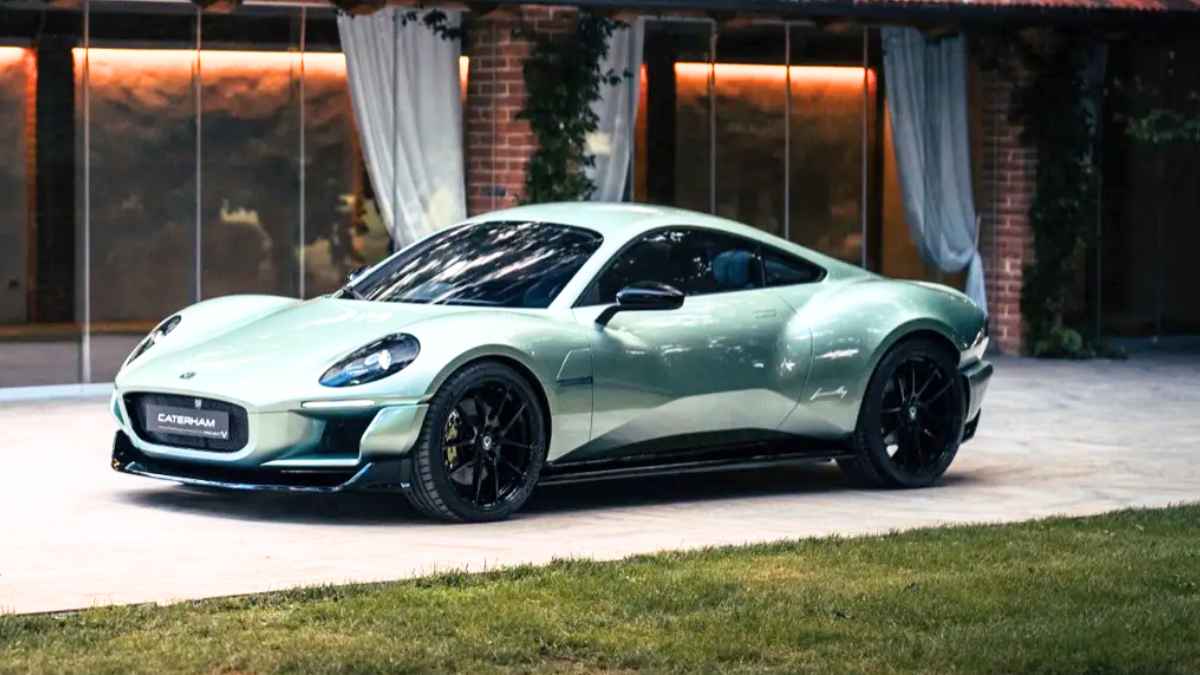The future of electric vehicles just got a lot more exciting. Yamaha and Caterham have officially joined forces to create a game-changing electric sports car, marking a significant leap forward in the race for sustainable mobility. This innovative collaboration promises to deliver an eco-friendly yet thrilling driving experience.
With the automotive industry undergoing a major shift toward greener alternatives, the partnership between Japanese tech giant Yamaha and British carmaker Caterham signals a bold step in the development of electric vehicles. The result of this collaboration is Project V, an all-new electric sports coupé designed to redefine what it means to drive clean and efficient.
The vehicle isn’t just about being electric—it’s about creating a sustainable sports car that doesn’t compromise on performance or driving pleasure. Project V is expected to break new ground in the electric vehicle (EV) sector, offering a lightweight, high-performance option that is as fun to drive as it is environmentally responsible.
Why Project V is a game-changer for electric cars
Project V stands out in the world of electric vehicles for its minimalist design, focus on driver engagement, and cutting-edge technology. Unlike bulky, complicated electric cars, Project V takes a simpler, more refined approach to clean mobility. With its sleek body and emphasis on lightweight construction, the car offers an ideal balance between environmental impact and driver satisfaction. Here’s why Project V is set to be a game-changer in the electric vehicle market:
- Lightweight, sleek design for enhanced agility and performance.
- Minimalist interior focused on driving experience rather than unnecessary features.
- Zero emissions for a cleaner, greener driving experience.
These qualities make Project V more than just another EV. It’s a car built with drivers in mind, offering a direct and engaging experience that aims to satisfy even the most discerning automotive enthusiasts.
One of the standout features of Project V is its cutting-edge engineering. The heart of the car is Yamaha’s e-axle technology, which integrates the motor, gearbox, and power electronics into a single unit. This compact design allows for improved performance, reduced weight, and more efficient energy use, resulting in a car that handles sharply and delivers responsive driving dynamics.
| Feature | Benefit |
|---|---|
| Yamaha e-axle | Compact, integrated unit for better performance and efficiency |
| Lightweight design | Enhanced agility and responsive handling |
| Advanced motion control | Superior driving dynamics and engagement |
Yamaha’s deep expertise in motion control systems further enhances Project V’s handling. The goal isn’t just to create a zero-emission vehicle but to deliver a driving experience that feels joyful and dynamic—just like traditional sports cars.
Real sustainability: Moving beyond marketing buzzwords
While many companies focus on flashy green initiatives, Yamaha and Caterham are committed to practical, real-world sustainability. Their approach to electric mobility emphasizes the development of small, modular components that can be applied across various transportation sectors, including motorcycles, cars, and beyond. Here’s how Yamaha and Caterham stand out in the push for greener vehicles:
- Carbon-neutral goals by 2050, including reducing indirect emissions.
- Refined EV components that can be scaled and applied across multiple mobility solutions.
- Commitment to real innovation that goes beyond marketing hype.
This focus on practical innovation means that Project V isn’t just an electric car; it’s part of a broader strategy to make transportation smarter and more sustainable for the long haul. With its groundbreaking design, advanced engineering, and commitment to sustainability, Project V is poised to become a significant player in the electric vehicle market. Yamaha and Caterham’s collaboration represents a fresh perspective on what an electric sports car can be: a perfect fusion of performance, sustainability, and driving enjoyment.
As Project V nears its debut, it could set a new standard for how we think about electric vehicles and their role in the future of mobility.

